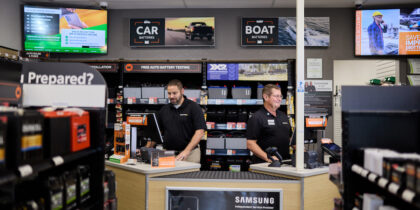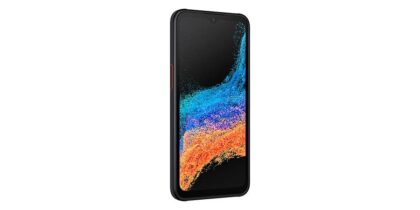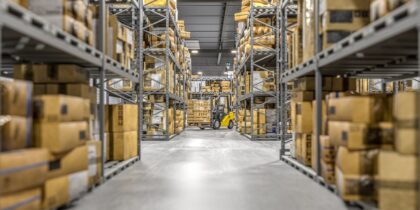Inside brick-and-mortar stores, many customers use their personal smartphones to locate items, compare prices, read product reviews and even find alternative store locations — all from on the sales floor. A PYMNTS study found that about half (48 percent) of people who have smartphones use them to help with in-store shopping.
Retail associates are following suit, now equipped with the same level of technology and product knowledge. Mobile devices like the Samsung Galaxy XCover Pro allow associates to help customers quickly and efficiently, improving their overall shopping experience. Associates are alerted when shoppers enter the store so they can greet them in a timely manner. Price checks can be completed at the point of decision instead of migrating to a stationary terminal. And if an item is out of stock on-site, an associate can help the customer find the item at another location.
Retailers need to provide a frictionless experience in order to close sales and encourage brand loyalty. Here’s how you can enhance the customer journey with your mobile strategy for retail:
Locating products quickly
Most people have experienced being in the midst of shopping, unable to find the last item on their list. You ask an employee for help, and they have to return to the register or page a colleague to look it up and get back to you. But with a mobile device, they can provide immediate assistance to help locate the item, plus greater insight into current stock and, if necessary, similar items. This is especially helpful for new employees who aren’t as familiar with the store layout and inventory, or for locating promotional items stored on end caps and temporary displays.
Curbside and in-store pickup
More than half of all online shopping now occurs on mobile devices, and that proportion is expected to grow as consumers continue to embrace e-commerce. Customers now expect to be able to browse your inventory, place an order and pay online. But many people prefer the convenience of curbside or in-store pickup, to get their items sooner than if they were delivered. Connected by mobile devices, associates can meet customers outside when they arrive and hand them their items, or quickly retrieve them inside the store.
Requesting inventory
Sold-out SKUs can be frustrating for shoppers who are set on a specific item, but it doesn’t mean retailers have to lose that sale. Workers can use their mobile device to help shoppers find out-of-stock items at another store location. What’s more, Samsung rugged smartphones can function as inventory management tools with an integrated barcode scanner, sled type and receipt printer, accessible at the push of a button. They can even issue refunds, collect returns and quickly reorder out-of-stock items right from the sales floor.
Point-of-decision price checks
An item without a price tag disrupts the customer journey and can create confusion. Even customers looking for a deal may not have the time or the inclination to trek to the front desk for a price check. Mobile devices allow associates to resolve these situations quickly by providing accurate pricing information in real time. Mediating these small moments of hesitation in the customer journey can make the difference between closing a sale and losing it.
Quick and easy checkout
Long and unruly checkout lines can create irritation and anxiety — which no brand wants to be known for. Worst-case scenario, a customer might abandon their items and leave the store altogether. Part of an effective mobile strategy is being able to meet your shoppers’ needs in real time. When a line starts to form, managers can discreetly call for backup at the register, or direct associates in other parts of the store to process mobile payments where they are. In some cases, retailers may be able to say goodbye to traditional registers altogether.
Transform retail associate performance
Get your free guide to empowering retail associates with mobile devices and data. Download Now
Retail therapy is still relevant
Creating a stimulating and engaging retail experience that eliminates friction points in the customer journey keeps shoppers in an interactive state of mind — which inclines them to make purchases. For many consumers, shopping is a reward and social pastime. Retailers can make the experience more enjoyable by sharing real-time marketing content such as mobile lookbooks and promotions. Using app-sourced data, brands can tailor these interactions according to customers’ recent searches and purchase history.
Equipping associates with mobile devices not only improves the customer journey, it makes for more satisfied workers. In many cases, employees who want to do a good job are just missing the necessary tools to provide a personalized customer experience. When staff are equipped with powerful mobile devices, they can save time, streamline store operations and redirect their energy toward more productive tasks. This translates to happier customers, improved employee retention and higher profitability.
As you strategize a mobile upgrade for your store — or stores — you can find the right smartphone for your business and employee needs with Samsung’s free, quick assessment. And to expand your options, explore the rest of Samsung’s innovative, versatile retail solutions, designed to help you find new customers and keep them coming.





